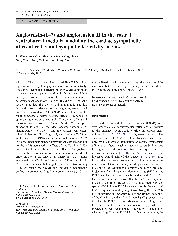摘要
The rostral ventrolateral medulla (RVLM) plays a pivotal role in regulating sympathetic vasomotor activity. The cardiac sympathetic afferent reflex (CSAR) contributes to the enhanced sympathetic outflow in chronic heart failure and hypertension. The aim of the present study was to determine whether angiotensin (Ang) II and Ang-(1-7) in the RVLM modulate the CSAR and sympathetic activity. Bilateral sinoaortic denervation and vagotomy were carried out in anesthetized rats. The CSAR was evaluated as the renal sympathetic nerve activity (RSNA) response to epicardial application of capsaicin. The effects of bilateral microinjection of Ang II, Ang-(1-7), the AT(1) receptor antagonist losartan or the Mas receptor antagonist d-alanine-Ang-(1-7) (A-779) into the RVLM were determined. Either Ang II or Ang-(1-7) enhanced the CSAR as well as increased RSNA and mean arterial pressure (MAP) in a dose-dependent manner. Pretreatment with losartan but not the A-779 abolished the effects of Ang II, while A-779 but not the losartan eliminated the effects of Ang-(1-7). The RVLM microinjection of losartan alone had no direct effect on the CSAR, RSNA, and MAP, but A-779 alone attenuated the CSAR and decreased RSNA and MAP. These results indicate that Ang-(1-7) is as effective as Ang II in sensitizing the CSAR and increasing sympathetic outflow. In contrast to Ang II, the effects of Ang-(1-7) are not mediated by AT(1) receptors but by Mas receptors. Mas receptors, but not the AT(1) receptors, in the RVLM are involved in the tonic control of the CSAR.
- 出版日期2010-4
- 单位南京医科大学
